The Build – Part 5
Part 5 of our build focuses on the shocks. Before you ask, yes, the shocks are ‘Classic’ as well, using the old-skool internal loading with the snap clips to keep the seals in place. While this was a pain back in the day, it appears AE has either made new molds for the plastic or the shock bodies are in better condition…the shocks build quite nicely.
Build Notes:
 Keep some clean, old rags handy for this step. Shocks mean fluids, and if you’re like me there will be some oil outside the shocks as well.
Keep some clean, old rags handy for this step. Shocks mean fluids, and if you’re like me there will be some oil outside the shocks as well.
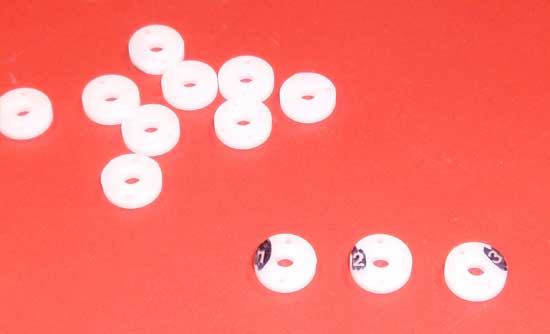
The first step is to gather up the #2 pistons. Seeing as the number is a bit hard to read, I used a Sharpie to highlight the numbers on all the pistons. Highlight, grab the 4 #2 pistons and trim off any excess plastic that sticks out off of them.
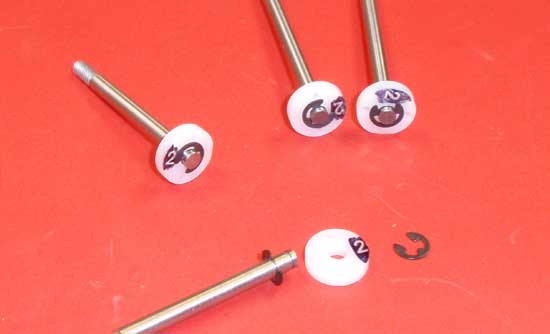
Snap an e-clip into the lower groove in the shock shaft, slide the piston into place and secure with a second e-clip.
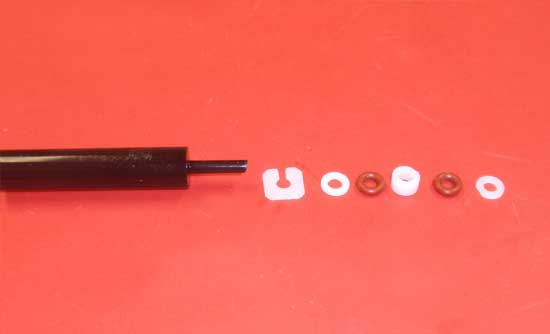
Before the easy-to-build shocks that are available today, most shocks were built by sliding the seals down into the bodies. Start this step by gathering up all the parts shown (x4, since we’re building 4 shocks) and make sure you trim any spare plastic ‘burrs’ hanging off the parts. Slide the parts onto the shock tool in the order shown.
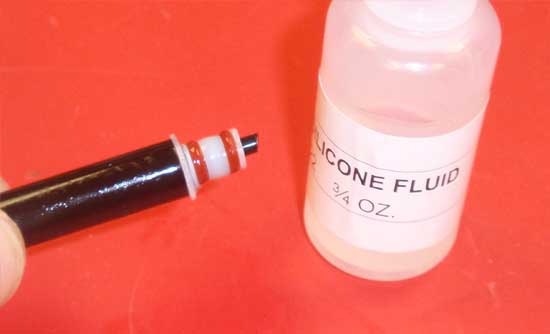
Using the silicone fluid included with the kit, put a drop or two on the assembly, making sure to coat all sides of the parts.
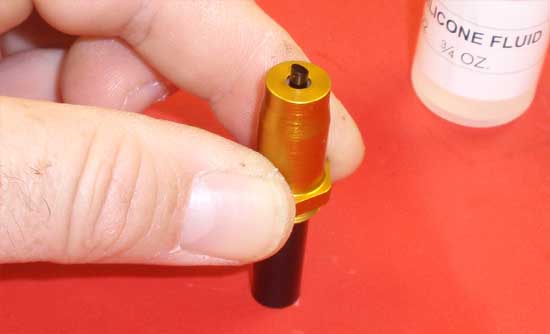
Slide the shock parts into the shock body, place the tool on a flat surface and press down on the body as shown. You should hear (and feel) the body ‘snap’ into place. You can also tell the parts are seated by how far the shock tool sticks out of the body (see pic). Build all 4 shocks.
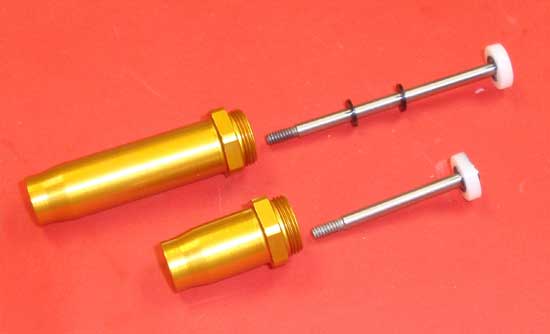
Take the shorter shock shaft assembly and put a drop of silicone fluid on the threads. Slide it down into the body and CAREFULLY push it past seals. Do the same for the rear shocks, but before pushing into the body, slide two down-travel limiting shim on the shaft first (2 on each rear shock shaft).
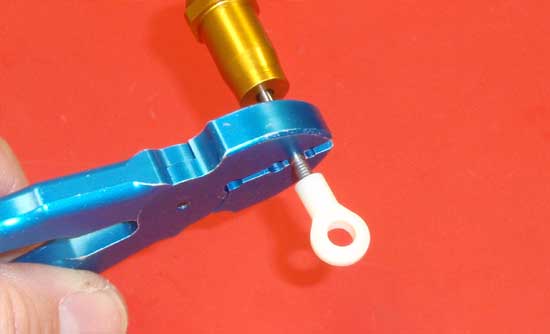
Grab ahold of the shock shaft and thread the plastic eyelet onto the shaft just to where the threads disappear. I use a STRC Shock Shaft Holding Tool as it allows a firm grip but doesn’t scratch the shock shaft.
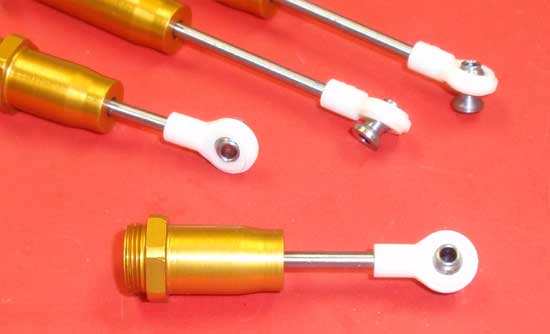
Pop the shock pivot ball into the eyelet as shown. Once completed, your shocks should look like this.
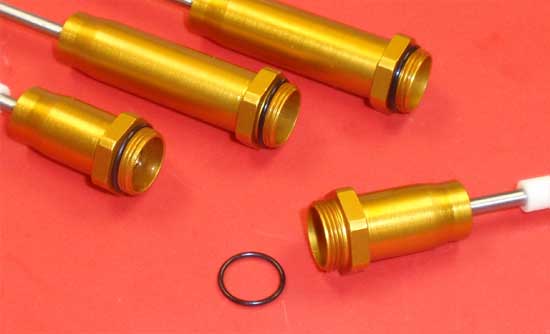
Take a black o-ring and feed it over the shock body as shown.
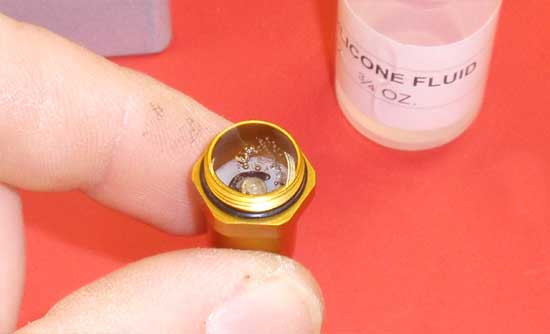
Fill the shock with the provided silicone oil. Move the shock shaft slowly up and down to release any air bubbles under the piston. Set the shock aside to allow the bubbles to rise to the top. Continue the other 3 shocks.

Once the bubbles are gone, fill the shock back up to the top (i usually fill it until it is perfectly flat across the top of the shock body). Put one drop of oil in the cap, flip it over onto the shock and tighten down. You’ll want to follow the shock bleeding instructions in the manual. Once completed, the shock shaft should push all the way up into the body.
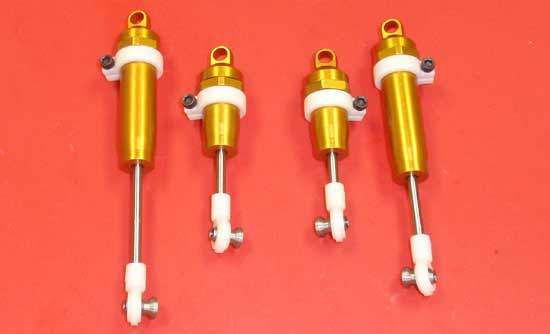
Install the screw into the shock collar, slip the collar onto the body and tighten down the screw. Move them all the way to the top to start. Notice how I have two collars with the screws on one side, two with them on the other. This will make it easier to adjust when on the car.
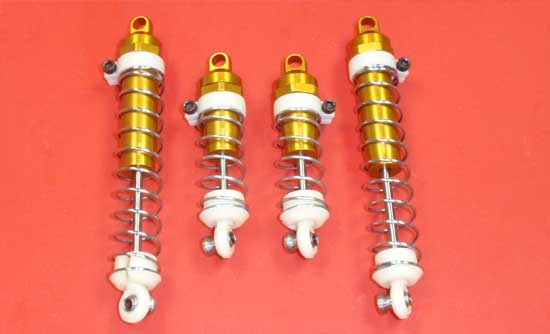
Slide the springs onto the shocks followed by the spring cups (at the bottom). At this time, you can also match the shock collar setting to the ones listed in the manual.
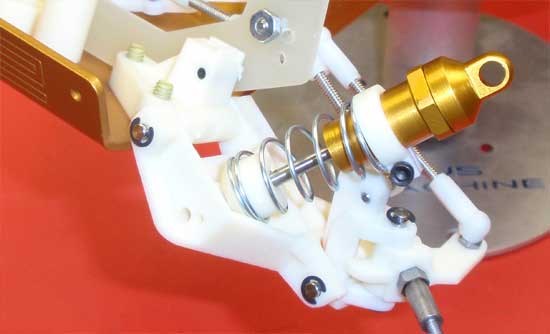
This part can be a little tricky as there the tolerances for the bottom of the shock slipping into the suspension arm are quite tight. I took an Xacto and trimmed a little plastic away from the arm, beveling the entry point for the bottom of the shock. This helped it to slide into place much easier.
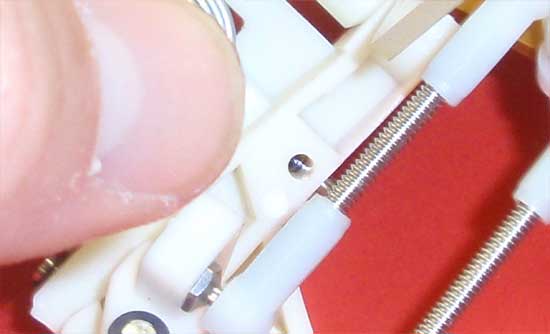
The lower shock pin get installed next, but before I did that, I took my Sharpie and colored in the set screw groove on the pin. Now, when I slide it into the arm, I can see the black through the set screw hole, helping me align these two parts easier.
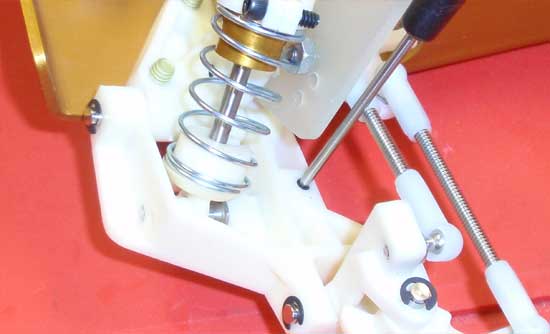
Install and tighten down the set screw.
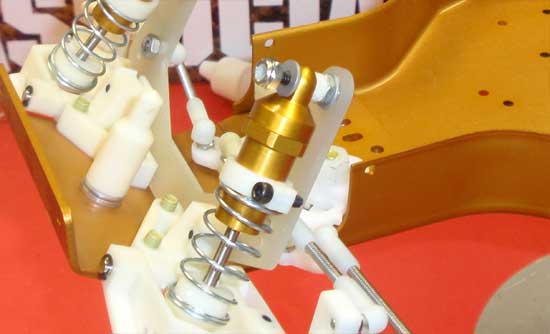
Slip the shock bushing onto the screw followed by the shock. Set the aluminum washer into place and secure the whole assembly with the locknut.
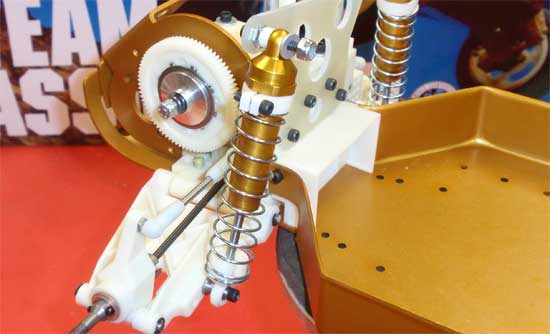
Insert and tighten the screw into the bottom of the shock (2nd hole in). Slip the shock bushing onto the screw followed by the top of the shock. Set the aluminum washer into place and secure the whole assembly with the locknut.
 Part 6 – Installing the electronics.
Part 6 – Installing the electronics.
 RC Driver The Best In RC Car & Truck News, Reviews & Video
RC Driver The Best In RC Car & Truck News, Reviews & Video 








